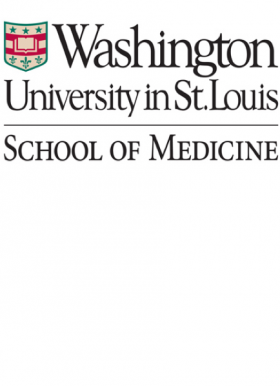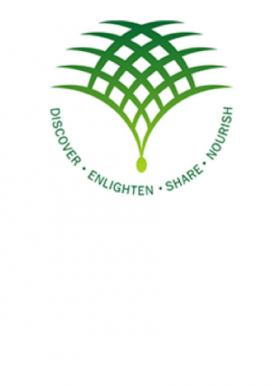Undergraduate students can conduct biodiversity research with the following mentors through the Anthropology and Biology departments:

Kari Allen, PhD
Assistant Professor of Biological Anthropology in the College of Arts & Sciences; Assistant Professor of Neuroscience in the Washington University School of Medicine
- Email: kari.allen@wustl.edu
My research focuses on the interpretation of adaptive function in the fossil record via comparative mammalian anatomy and behavior and the use of these data to reconstruct ecological and evolutionary pressures acting on extinct primate communities. In particular, two main points of interest are: 1) the timing and ecological correlates of brain size evolution, brain proportions, and cranial anatomy in primates, and 2) the use of cranio-dental anatomy to reconstruct ecological adaptations (e.g. feeding ecology) in the fossil record.

Rebecca Bart, PhD
Assistant Member of the Donald Danforth Plant Science Center, Adjunct Professor of Biology in the College of Arts & Sciences
- Email: rbart@danforthcenter.org
When plant disease occurs, it can be devastating to farmers and consumers. Pesticides are often employed in an attempt to limit spread, further adding to the total cost of disease. The Bart lab focuses on exploring natural genetic diversity and exploiting identified phenotypic traits for sustainable crop improvement and seeks to apply modern molecular biology tools to genetically intractable organisms.

Eli Baskir, MS
Behavioral Research Associate at the Saint Louis Zoo
- Email: baskir@stlzoo.org
The Behavior Lab at the Saint Louis Zoo studies animal behavior in a variety of species and contexts. Eli Baskir focuses on social and reproductive behaviors, as well as animal interactions with enrichment, exhibit use, and activity level, to answer both research and management questions. The Behavior Lab works closely with the Zoo’s Endocrine Lab to correlate live or video-recorded observations with hormone measures.

Amy Bauernfeind, PhD
Assistant Professor of Biological Anthropology in the College of Arts & Sciences, Assistant Professor of Neuroscience in the Washington University School of Medicine
- Email: bauernfeinda@pcg.wustl.edu
I am interested in how the biology of the brain underlies a species’ particular cognitive specializations and behavioral repertoire. My research program investigates neuroanatomical and molecular variation in primates to address questions of evolutionary significance, particularly with regard to the unique cognitive abilities of humans. I use two approaches when evaluating research questions of these types: molecular expression and quantitative neuroanatomical techniques. Additional work pertains to differences in regional neuronal morphology across species.

Yehuda Ben-Shahar, PhD
Associate Professor of Biology in the College of Arts & Sciences
- Email: benshahary@wustl.edu
We study the evolutionary, genetic, molecular, cellular, and behavioral mechanisms underlying the interaction of animals with their physical and social environments. We use the powerful genetic model, Drosophila melanogaster, the European honey bee Apis mellifera, and mammalian models to ask where, when, and how the function of specific genes, cell types, and neuronal circuits affect behavioral plasticity and the behavioral response to specific environmental and social stimuli.

Stephen M. Beverley, PhD
Marvin A. Brennecke Professor and Head of Molecular Biology in the Washington University School of Medicine
- Email: beverley@wustl.edu
The Beverley Laboratory focuses on the molecular genetics of protozoan parasites, including some of the most deadly pathogens known. Much of our work centers around the trypanosomatid protozoan Leishmania, a deep branching eukaryote with many fascinating differences from more ‘standard’ cells. Recently we have moved into the study of the role of endogenous protozoan viruses in virulence, in Leishmania as well as other parasites.

Arpita Bose, PhD
Assitant Professor of Biology in the College of Arts & Sciences
- Email: abose@wustl.edu
Our lab studies microbial metabolisms and their influence on biogeochemical cycling using an interdisciplinary approach. We apply the knowledge we gain to generate new ways of addressing issues such as the energy crisis, pollution, biofouling and sustainability.

Alex Bradley, PhD
Assistant Professor of Earth and Planetary Sciences in the College of Arts & Sciences
- Email: abradley@eps.wustl.edu
I am a biogeochemist interested the ways in which the evolution of life on Earth and the evolution of the Earth`s environment have affected one another over the course of Earth history. Our laboratory uses the tools of organic geochemistry to try to understand how organic structures synthesized by living organisms can be preserved over geological time spans, and record information about the organisms and ecosystems from which they derive. We also use light stable isotope geochemistry to try to understand characteristics regarding the biogeochemical cycling of carbon, hydrogen, nitrogen, oxygen, and sulfur.

David Browman, PhD
Professor Emeritus of Archaeology in the College of Arts & Sciences, Director of the Interdisciplinary Program in Archaeology
- Email: dlbrowma@wustl.edu
One focus of my continuing research is upon the events that gave rise to the origins of plant and animal domestication, ultimately resulting in the formation of the pristine state. A second major focus recently has been upon the evolution of the philosophical approaches that Americanist archaeologists have created to investigate the development of socio-political complexity over time. Attention to historical archaeology and the history of archaeology continually reveal empire building in the field, as well as long-term biases regarding various gendered and regional groups.

Philip Budge, MD
Research Scientist in the Washington University School of Medicine
- Email: pbudge@wustl.edu
This laboratory is devoted to research on filarial nematode parasites that cause important diseases in animals and humans (lymphatic filariasis and onchocerciasis), mainly in the tropics. We are currently focused on research to support the Global Programme to Eliminate Lymphatic Filariasis through applied field research, translational research to develop improved diagnostic tests and treatments, and basic research on the biology of filarial nematodes.

Bruce A. Carlson, PhD
Associate Professor of Biology in the College of Arts & Sciences
- Email: carlson.bruce@wustl.edu
We use an integrative approach to study animal communication and the evolution of sensory processing, using weakly electric fishes as a model system. Our work is unique in its application of detailed neurophysiology within a comparative behavioral framework, and it has implications for our understanding of neural mechanisms for behavior as well as the evolution of behavioral diversity.

Thomas B. Croat, PhD
P.A. Schulze Curator of Botany and Researcher at the Missouri Botanical Garden, Honorary Adjunct Professor of Biology int the College of Arts & Sciences
- Email: tcroat@wustl.edu
My research interests involve the systematics, floristics and ecology of the family Araceae (philodendron family). Despite the great horticultural interest in the philodendron family and its importance as a major component of many tropical forests, the taxonomy of Araceae is extremely poorly known and the family still contains a high proportion of undescribed species. Thus, work at this stage consists primarily of recognizing and describing new species, writing descriptions and identification keys for tropical floras, and intensively studying certain groups.

Gautam Dantas, PhD
Professor of Pathology and Immunology, Biomedical Engineering, and Molecular Microbiology in the Washington University School of Medicine
- Email: dantas@wustl.edu
The Dantas Lab works at the interface of microbial genomics, ecology, synthetic biology, and systems biology, to understand, harness, and engineer the biochemical processing potential of microbial communities. We take a quantitative ecological perspective in our study of diverse microbial communities, with a focus on human associated microbiota and interconnected environmental habitats. Accordingly, one of our major goals is to understand and quantitatively predict the effects of anthropogenic interventions (e.g. antibiotics) on microbial community composition and function.

Sharon Deem, DVM, PhD, DACZM
Director of the Saint Louis Zoo Institute for Conservation Medicine
- Email: deem@stlzoo.org
Sharon has conducted conservation and research projects in 30 countries around the world. A few of her research projects include a health-monitoring program for gorillas in central Africa, health assessments of sea turtles in Africa and the Americas, avian and tortoise studies in the Galapagos Islands, Ecuador, and studying box turtle health and ecology in Saint Louis. Her interests in wildlife veterinary medicine focus on the spread of disease between domestic animals and wildlife and the health impact of environmental changes and human contact on wild species.

Andrea Eveland, PhD
Assistant Member and Principal Investigator at the Donald Danforth Plant Science Center
- Email: aeveland@danforthcenter.org
Inflorescence architecture, e.g. the number, length and angle of branches and flowers, is a primary determinant of yield, regulating seed number and harvesting ability. Cereal crops display a diverse array of architectures in their inflorescences, which are fundamentally derived from variations on a common, grass-specific morphology. Research in the Eveland lab leverages this diversity among species, as well as that within a species resulting from natural variation or genetic perturbation (mutant alleles), to understand the gene networks controlling inflorescence development in grasses.

Gayle Fritz, PhD
Professor of Archaeology in the College of Arts & Sciences
- Email: gjfritz@wustl.edu
I work with archaeobotanical remains to answer questions about how people interacted with plants so that they could eat and drink well, manage their landscapes, restore and maintain health, perform rituals, negotiate trade relationships, and enhance many other economic and social activities. Much of my research focuses on processes of plant domestication and sequences leading to the development of agricultural systems worldwide, especially in North America and Mexico. General concerns and approaches involve cultural, ecological, and biological aspects of subsistence change and continuity. Recently I’ve become interested in food-ways resulting from interaction between Native Americans and European colonizers.

Peter C. Hoch, PhD
Researcher and Curator at the Missouri Botanical Garden, Adjunct Professor of Biology in the College of Arts & Sciences
- Email: Peter.hoch@mobot.org
I am interested in understanding plant evolution on a broad scale, why some species and genera are so successful (sometimes even invasive) and why other closely related taxa are rare or threatened. The plant family Onagraceae is my model system of choice—thanks to the efforts of my mentor Peter Raven and collaborators, we know a great deal about the taxonomy, morphology, anatomy, cytology, embryology, pollination biology, biogeography, molecular systematics, and other aspects of this family. We now are able to ask sophisticated questions about the evolution of the group.

Elizabeth A. Kellogg, PhD
Robert E. King Distinguished Investigator at the Donald Danforth Plant Science Center, Adjunct Professor of Biology in the College of Arts & Sciences
- Email: ekellogg@danforthcenter.org
We are fascinated by the elegant and diverse forms that plants can take, and we explore the biological basis of this diversity. For some of us, the exploration leads us to look below the surface at the machinery that controls plant shape and structure; this work has been variously described as evolutionary developmental genetics, or evo-devo. For others in the lab, the exploration leads us to investigate the variations on a single morphological theme by studying closely related plants in a single genus; these studies fall into the discipline of systematics.

Tristram R. Kidder, PhD
Edward S. and Tedi Marcias Professor of Environmental Studies, Chair of the Department of Environmental Studies in the College of Arts & Sciences
- Email: trkidder@wustl.edu
I have two main research interests: First, what causes people to arrange themselves through time into increasingly complex forms of social organization? Second, how do climate and environment shape human societies through time? Related to this, I am especially interested in the Anthropocene concept, which argues that humans have come to rival nature as a force shaping the earth. My work therefore explores how, when, and to what extent humans have changed climates and especially their environments.

Corinne Kozlowski, PhD
Endocrinologist at the Saint Louis Zoo
- Email: kozlowski@stlzoo.org
As the Zoo’s Endocrinologist, Dr. Kozlowski’s work focuses on the reproductive status and health of endangered species, both in zoos and in the wild. This is accomplished primarily through measures of gonadal and adrenal hormones in non-invasively collected samples. Corinne has validated hormone assays for more than 70 species and manages one of only three Endocrinology service labs in the country. Her research is driven by an interest in comparative aspects of physiology and behavior, with the goal of assisting in species conservation.

Xinyi Liu, PhD
Assistant Professor of Archaeology in the College of Arts & Sciences
- Email: liuxinyi@wustl.edu
Our lab is involved in a range of research focused on early food-webs. We favor multidisciplinary research, and here in the lab isotope scientists, archaegologists and archaeobotanists work closely to address questions about diet and nutrition, palaeoclimate and palaeoenvironment. Our recent projects have included: Eurasian crop plant movement, African terrestrial climate variability, consumption and domestication of small grained grass, environmental context of the food quest in Tibet.

Jonathan Losos, PhD
William H. Danforth Distinguished Professor of Biology in the College of Arts & Sciences
- Email: losos@wustl.edu
The primary focus of the Losos Lab is on the behavioral and evolutionary ecology of lizards. Major questions concern how lizards interact with their environment and how lizard clades have diversified evolutionarily. Addressing such questions requires integration of behavioral, ecological, functional morphological, and phylogenetic studies. A major focus has been the evolutionary radiation of Caribbean Anolis lizards, but other lizard radiations are also being studied. A newly-developing line of research concerns whether and how species are adapting to urban environments.

Fiona Marshall, PhD
James W. and Jean L. Davis Professor in Arts and Sciences of Anthropology
- Email: fmarshal@wustl.edu
My research focuses on animal domestication and the beginnings of food production in Africa. I am currently conducting research on two unlikely domesticates, donkeys and cats. I am currently conducting interdisciplinary research on the domestication of the donkey with archaeological, morphometric, genetic, behavioral and ethnoarchaeological components. My research and that of my graduate students contributes to understanding human-animal relations, complex interactions among ancient agricultural, pastoral and hunter-gatherer societies in Africa, the history and resilience of livestock and herding ways of life, and the sustainability of use of African grasslands.

Krista Milich, PhD
Assistant Professor of Biological Anthropology in the College of Arts & Sciences
- Email: krista.milich@wustl.edu
Dr. Krista Milich is a primate behavioral ecologist and socioendocrinologist with a particular interest in reproductive physiology and sexual selection. Her work aims to not only understand the proximate and ultimate mechanisms associated with the evolution of primate social systems, but also to use that knowledge to inform primate conservation efforts.

Jonathan A. Myers, PhD
Associate Professor of Biology in the College of Arts & Sciences
- Email: jamyers@wustl.ed
Our research focuses on patterns and causes of biodiversity at multiple scales, ranging from variation in the diversity of species’ traits to gradients in the assembly, diversity and dynamics of ecological communities across the planet. We explore theories to explain why changes in biodiversity through space and time emerge through the interplay of fundamental processes of community ecology (speciation, dispersal, ecological drift & niche selection). To untangle these processes, we combine field experiments, large-scale and long-term observational studies, ecological modeling, and synthesis of biodiversity data from a wide range of plant communities spanning temperate and tropical ecosystems.

Kenneth M. Olsen, PhD
Professor of Biology in the College of Arts & Sciences
- Email: Kolsen@wustl.edu
My research focuses on the genetic basis of evolution in plants: how is the genetic variation that we find within a species shaped by natural selection, population history, and other evolutionary forces? One way that I look at this question is by using crop domestication as a model for rapid evolutionary change. The wealth of genetic and genomic information available for crops makes them useful for studying the molecular evolution of genes in response to selection and other forces. In my lab we also study the evolutionary genetics of wild plant species. Topics of interest include the genetic basis of adaptive variation, the forces affecting genome-wide patterns of linkage disequilibrium, and phylogeography.

Eleanor Pardini, PhD
Assistant Director, Research Scientist, and Lecturer in the Department of Environmental Studies in the College of Arts & Sciences
- Email: epardini@wustl.edu
I am broadly interested in the effects of genetic and ecological processes on population dynamics of invasive and rare plants. My research addresses questions that lie at the interface of population ecology and population genetics. Studying invasive and rare plants allows me to examine basic principles of the interactions between ecological and evolutionary processes that contribute to why some plants are very common and others are very rare. A population dynamic perspective provides insights that inform management of invasive plants and conservation of rare plants.

David Queller, PhD
Spencer T. Olin Professor of Biology in the College of Arts & Sciences
- Email: Queller@wustl.edu
Perhaps no community is more diverse than the soil microbiome with its predators, parasites, scavengers, cooperators, and symbionts, for ultimately all primary productivity ends up on the ground or in the water. We are interested in social evolution and mutualism. Our team uses a social amoeba as a window on this world. It has a solitary and a social stage, with cooperation, conflict, and cheating. It is also has symbiotic relationships with bacteria which influence its role in the community. It even has its own tiny microbiome. Because this system is microbial, it is amenable to field and laboratory experimentation, genomics, experimental evolution, and understanding at the level of the gene. We have a diverse and dynamic team of undergraduates who also are involved in scientific outreach. We also see to it that they get the big picture with a class dedicated to research methods.

Terrence Ritzman, PhD
Assistant Professor of Anthropology in the College of Arts and Sciences, Assistant Professor of Neuroscience in the Washington University School of Medicine
- Email: tritzman@wustl.edu
I am a physical anthropologist interested in the comparative anatomy of the skull in primates as it relates to human evolution. I employ the comparative method and direct studies of fossil hominins to make inferences regarding the evolutionary processes that operated during the course of human evolution, as well as the patterns, documented by the fossil record, that were produced by these processes. I am also continuing my research program relating to the evolution of the skull and brain in the hominin lineage.

Jan Salick, PhD
Senior Curator of the William L. Brown Center at the Missouri Botanical Garden
- Email: jan.salick@mobot.org
The William L. Brown Center (WLBC) is dedicated to the study of useful plants, understanding the relationships between humans, plants, and their environment, the conservation of plant species, and the preservation of traditional knowledge for the benefit of future generations.

Crickette Sanz, PhD
Associate Professor of Biological Anthropology in the College of Arts & Sciences
- Email: csanz@wustl.edu
My research focuses on understanding the factors which have led to the emergence and promoted the maintenance of behavioral diversity in primates. I am particularly interested in the variation of social organization and material culture that has been documented among wild chimpanzee populations. This pursuit involves field studies and collaborative projects to examine instraspecific variation in the behavioral ecology of wild chimpanzees. These studies hold important insights for elucidating the role of ultimate and proximate forces in primate evolutionary history, which will aid in constructing valid models of human evolution from our closest living relatives.

Claudia Stein, PhD
Research Scientist at Tyson Research Center
- Email: cstein@wustl.edu
My main research interests are directed towards understanding the influence of species interactions, especially plant-herbivore and plant-soil feedbacks, as well as biological invasions on the relationship between biodiversity and ecosystem functioning.

Glenn Davis Stone, PhD
Professor of Sociocultural Anthropology and Environmental Studies in the College of Arts & Sciences
- Email: stone@wustl.edu
My research is on environmental anthropology, political ecology, food studies, and science & technology studies. I am particularly interested in the social and political aspects of agricultural systems; agricultural sustainability; intensification and industrialization; indigenous knowledge; responses to population increase; agricultural biotechnology; and alternative food/farming systems. I have worked on past and contemporary nonindustrialized farmers in Africa, India, the Philippines, and North America. One focus of my present research is on the spread of genetically modified crops in developing countries.

David Strait, PhD
Professor of Biological Anthropology in the College of Arts & Sciences
- Email: dstrait@wustl.edu
I am a paleoanthropologist who studies the fossil record of human evolution. Humans diverged from non-human apes about seven million years ago in Africa, and my research is directed towards trying to understand several key aspects of our evolutionary history. First, I am interested in understanding how and why the various species of early humans (known as hominins) diversified. Second, I am interested in the evolution of diet and feeding in fossil hominins. Third, I am interested in paleoanthropological fieldwork. In order to better understand human evolution, it is vital to discover new fossils in order to understand their variation, diversity, evolutionary relationships and ecological context.

Joan E. Strassmann, PhD
Charles Rebstock Professor of Biology in the College of Arts & Sciences
- Email: strassmann@wustl.edu
Perhaps no community is more diverse than the soil microbiome with its predators, parasites, scavengers, cooperators, and symbionts, for ultimately all primary productivity ends up on the ground or in the water. We are interested in social evolution and mutualism. Our team uses a social amoeba as a window on this world. It has a solitary and a social stage, with cooperation, conflict, and cheating. It is also has symbiotic relationships with bacteria which influence its role in the community. It even has its own tiny microbiome. Because this system is microbial, it is amenable to field and laboratory experimentation, genomics, experimental evolution, and understanding at the level of the gene. We have a diverse and dynamic team of undergraduates who also are involved in scientific outreach. We also see to it that they get the big picture with a class dedicated to research methods.

Christopher N. Topp, PhD
Assistant Member of the Donald Danforth Plant Science Center, Adjunct Professor of Biology in the College of Arts & Sciences
- Email: ctopp@danforthcenter.org
The Topp Lab takes a phenomics approach to study crop root growth dynamics in response to environmental stress such as drought and rhizosphere competition, and as a consequence of artificial selection for agronomically important traits such as Nitrogen uptake. Studying roots requires the development of imaging technologies, computational infrastructure, and statistical methods that can capture and analyze morphologically complex networks over time and at high-throughput. Thus the lab combines expertise in imaging (optical, X-ray CT, PET, etc.), computational analysis, and quantitative genetics with molecular biology to understand root growth and physiology.

Erik Trinkaus, PhD
Mary Tileston Hemenway Professor in Arts & Sciences of Biological Anthropology in the College of Arts & Sciences
- Email: trinkaus@wustl.edu
My research is concerned with the evolution of the genus Homo as a background to recent human diversity. I have focused on the paleoanthropological study of late archaic and early modern humans, emphasizing biological reflections of the nature, degree and patterning of the behavioral shifts between these two groups of Pleistocene humans. This research includes considerations of the “origins of modern humans” phylogenetic debate, the interpretation of the archeological record, and patterns of recent human anatomical variations.

James Umen, PhD
Member of the Donald Danforth Plant Science Center, Adjunct Professor of Biology in the College of Arts & Sciences
- Email: jumen@danforthcenter.org
I maintain a diverse and interdisciplinary research program aimed at answering fundamental questions in eukaryotic cell biology, evolution and development using the green algae Chlamydomonas reinhardtii (Chlamydomonas) and Volvox carteri (Volvox), as well as some of their close relatives in the volvocine algal family. Green algae are the smallest and simplest members of the green plant lineage, and are an ecologically important group of organisms for their role in the global carbon cycle. Our research takes advantage of unique aspects of Chlamydomonas and Volvox to answer questions that can ultimately impact agriculture and human health.

Emily Wroblewski, PhD
Assistant Professor of Biological Anthropology in the College of Arts & Sciences
- Email: emily.wroblewski@wustl.edu